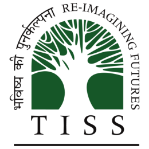Seventh Lecture in the series on Migration at Patna Centre, TISS: Class and Tenancy Question in Calcutta, 1912-1922
Archived
 Dec. 24, 2016
Dec. 24, 2016
Venue: 10, Mangles Road, Jagjivan Ram Institute of Parliamentary Studies and Political Research, Patna (near the State Election Commission’s Office)
Speaker: Dr. Ritajyoti Bandyopadhyay, Assistant Professor in History, Department of Humanities and Social Sciences, Indian Institute of Science Education and Research (IISER) Mohali
In this paper, I wish to study a specific form of “primitive accumulation of capital” in the central part of Calcutta in the second decade of the 20th century. During this decade, an ambitious street scheme of the Calcutta Improvement Trust (CIT) recycled more than 200 acres of prime land of the city, and dis-housed at least 50000 individuals living in densely populated neighbourhoods of Surtibagan, Jorabagan, Jorasanko, etc,—where upper caste Bengali Hindu rentier class population lived with an increasingly prosperous Marwari community, a lower-middle class Bengali constituency, an up-country Muslim trading community, and a huge mass of migrant (male) working class population working in Barabazar area mostly as coolies and transport workers. The Central Avenue Scheme of the CIT in this area created a lucrative speculative land market and reshuffled the ethnic distribution of property-ownership and tenancy. This paper seeks to take a “micro-history” approach to study this transformation in Calcutta. I propose to accomplish this task by tracking the life of a street in archives. I will show how such an exercise gives us an introduction to the rental geography of a city.
The period under review is sandwiched between the 19th century traditions of urbanism and the 20th century narratives of mass political formation, and thus it has remained largely unattended by historians, despite the fact that the First World War had a significant global impact on the urban land market and tenancy relations. In this paper, I hope to address this research gap. I will also make an attempt to bring in inner-city urban redevelopment at the heart of the study of Primitive Accumulation of Capital.
Lecture Series on Migration
We live in the ‘Age of Migration’. Though migration is an old phenomenon, actively promoted by the Colonial State, It was after the advent of liberalisation and integration of markets that migration has accelerated and diversified exponentially. This has made migration a complex and multi-dimensional phenomenon. The lectures under the series would try to explore these complexities by looking into the relationship between migration and labour processes, globalisation and liberalisation, partition, climate change, gender, land, urbanisation, state policies, violence, and social justice. A couple of lectures would also discuss folk literature as an epistemic source to understand migration.
TISS in Patna
The Centre for Development Practice and Research is a Patna-based centre of the Tata Institute of Social Sciences, Mumbai. The Centre has been established, with support from the Takshila Educational Society, with the objective to pursue research and publication, limited teaching and direct extension work in the community.
Presently, the Centre is engaged in research on migration, school education and caste-based practices. It has initiated a lecture series on Migration and will be conducting a seven-day orientation course on Migration from February 20 to 26, 2017.
For details, visit:http://www.tiss.edu/view/6/mumbai-campus/centre-for-development-practice-and-research/centre-for-development-practice-and-research/











